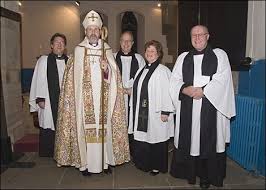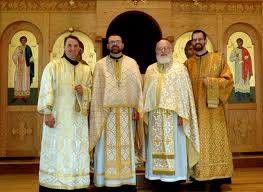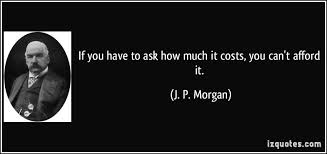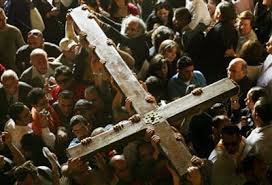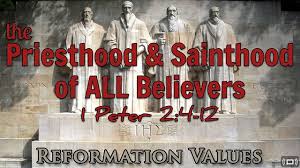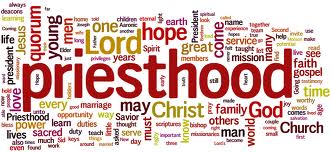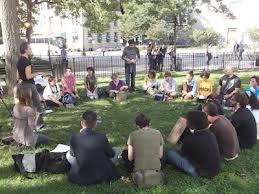 Why Should/Shouldn’t My Church Embrace Change? Part XXXXIV
Why Should/Shouldn’t My Church Embrace Change? Part XXXXIV
What do all these feasts have to do church structure or the five fold? The feasts are not about structure, but about relationships between man and his God. They aren’t about religious institutions, programs, or organizations; they are about living organisms.
Passover reestablished righteousness between God and man. “Righteousness” means “being in a right relationship.” Because of what Jesus did on the Cross, the “ain’ts” became “saints”! “Without faith it is impossible to please Him, for he who comes to God must believe that He is and that He is a rewarder of those who seek Him.” (Hebrews 11: 6) Those ”who seek Him” have been rewarded eternal life and membership into the Priesthood of Believers.
 Pentecost empowered this Priesthood of Believers to live by faith. All those listed in Hebrews 11 “gained approval through their faith” yet they, "did not receive what was promised, because God had provided something better for us. (Hebrews 11) What was promised would be Jesus and the Holy Spirit who would fulfill Passover, Pentecost, and the Feast of Booths. The Holy Spirit would empower believers to live out the Logos Word through the Rehma Word.
Pentecost empowered this Priesthood of Believers to live by faith. All those listed in Hebrews 11 “gained approval through their faith” yet they, "did not receive what was promised, because God had provided something better for us. (Hebrews 11) What was promised would be Jesus and the Holy Spirit who would fulfill Passover, Pentecost, and the Feast of Booths. The Holy Spirit would empower believers to live out the Logos Word through the Rehma Word.
The Feast of Booths, Feast of Tabernacles, Feast of Ingathering is relational because God is not only calling individual believers to Him eternally, but is calling an entire priesthood, the Priesthood of Believers, the Church to Him through Jesus Christ. Unlike marriage, it is now beyond “death do us part,” Because of Jesus’s death and resurrection, the committed relationship between God and man is now eternal.
Relationally physical and spiritual change happens through these feasts; the earthly body, that looks like mankind, is being changed into the image of Jesus Christ. We will “grow up in all aspects into Him who is the head, even Christ,” and we will “Lay aside the old self, which is corrupted in accordance with the lusts of deceit, and that you be renewed in the spirit of your mind, and put on the new self, which in the likeness of God has been created in righteousness and holiness of the truth.” (Ephesians 4:15, 22-24)
If we, as believers, will have new bodies, new “structures”, why wouldn’t the Church also transform into a new structure? If your temple (“Do you not know that your body is a temple (tabernacle) of the Holy Spirit?” (I Corinthians 6:19)) is going to be “renovated” or “renewed”, why wouldn’t the Church also experience renovation called “revival”? A new body! A new structure! A metamorphosis of newness, so we as individuals and corporately as the Body of Christ can fly, soar, into the heavenlies with the Godhead for eternity.
“Now on the last day, the great day of the feast (of Booths), Jesus stood and cried out, saying, “If anyone is thirsty, let him come to Me and drink. He who believes in Me, as the Scripture said, ‘From his innermost being will flow rivers of living water.’” But this He spoke of the Spirit, whom those who believed in Him were to receive; for the Spirit was not yet given, because Jesus was not yet glorified.” (John 7:37-39)
 Jesus announced openly in Herod’s Temple about the Holy Spirit. It would be the same thing he offered the Samaritan woman at the well, “from the innermost being will flow rivers of living water.” Jesus was offering them transformational relationships. “Jesus answered, “My teaching is not Mine, but His who sent Me. If anyone is willing to do His will, he will know of the teaching, whether it is of God or whether I speak from Myself. He who speaks from himself seeks his own glory; but He who is seeking the glory of the One who sent Him, He is true, and there is no unrighteousness in Him.” (John 7:16-18)
Jesus announced openly in Herod’s Temple about the Holy Spirit. It would be the same thing he offered the Samaritan woman at the well, “from the innermost being will flow rivers of living water.” Jesus was offering them transformational relationships. “Jesus answered, “My teaching is not Mine, but His who sent Me. If anyone is willing to do His will, he will know of the teaching, whether it is of God or whether I speak from Myself. He who speaks from himself seeks his own glory; but He who is seeking the glory of the One who sent Him, He is true, and there is no unrighteousness in Him.” (John 7:16-18)




